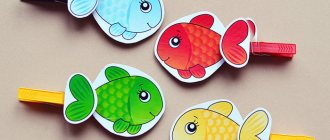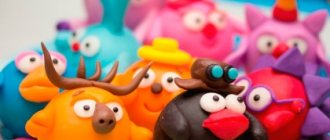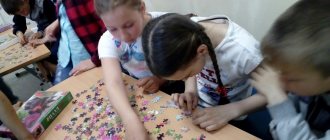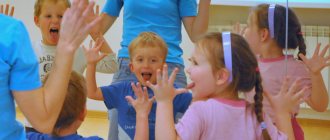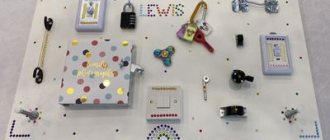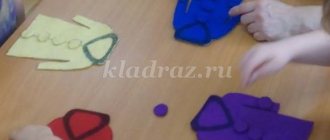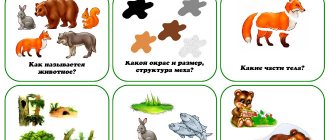What are fine motor skills?
Fine motor skills are the ability to make precise small movements with the fingers and hands. The work involves the muscular, nervous, skeletal and often visual systems.
The term “dexterity” is often used for the concept of “fine motor skills.” Movements can be simple (grasping a toy) or complex (writing and drawing). Fine motor skills are very important in the harmonious development of a child.
From birth to 2 months
At this age, movements are subordinated to innate reflexes. The baby moves his fingers involuntarily, that is, for no reason or in response to external stimuli. For example, if you press your fingers on his palm, he will clasp them quite tightly.
This is the so-called “grasping reflex”, which was inherited from our ancestors when baby monkeys were held on their mother’s fur by grasping. Normally, by the end of two months, the baby is already reaching out to things with his hands and can grab you or himself by the finger.
From 2 to 6 months
During this period, primary coordination begins to form - the child connects vision to hand movements. This realization is a great achievement. The baby is quite capable of grabbing objects that are in his field of vision and skillfully putting them into his mouth. He can look at his hands for a long time.
Hands in the mouth are an attempt to get rid of the itching when teeth appear. The child does not yet know how to sit, but you can let him touch different surfaces to develop tactile sensations.
From 6 to 12 months
In the second six months of life, the child’s vision improves and the muscles become stronger. The assimilation of grip begins - first with tweezers (fingers with a pinch), then with pinch (thumb and index are used).
The child tries to transfer objects from hand to hand. If he wants to get something, but cannot reach it, he pulls out his pen and points at the thing with his finger.
At 8–12 months, the baby is able to pick up objects and put them in a box. As a rule, he already uses a pinch grip for this. He can repeat the movements behind his mother, for example, if she pushes the car, he will do it too. The first interest in drawing appears, but unconsciously.
From one year to two
During this period, the level of development is already much higher - the child takes objects and studies them. He begins to distinguish between sizes, shapes and weights. Trying to dose his efforts.
At 1.5 years old he can hold a spoon in his hands and can unwrap candy himself. Trying to build a tower from several cubes.
Closer to 2 years, he no longer turns all the pages in a book at once, but can turn one page at a time. With interest, he unscrews and screws on the cap of the Agusha puree in a sippy cup package, specially designed for this purpose.
From two to five years
During this period, static grip has already been mastered, when the child grabs a thing and holds it in his hands. Dynamic skills are being studied - the ability to work with an object in the hands, for example, draw with a pencil, cut paper.
- At 3–5 years old, fine motor skills are more developed in girls, so if a boy lags behind, this can be considered the norm. Children develop self-care skills - using a toothbrush and comb. Many can dress themselves, fasten buttons, rivets, and lace their shoes.
- At 2–3 years old, a child can engage in modeling. He freely opens the desk drawers and takes out the contents. Draws simple shapes with his fingers.
- At 3 years old, a child can string beads on a wire, collect cereal with a spoon and pour it into a glass. At 3.5, he enjoys modeling, but can only make balls and sausages, draws a line without lifting his hand, knows what clasps and Velcro are.
- At 4 years old, a child traces contours and can build tall towers from cubes.
- At 4–5 years old, he colors pictures and draws with a pencil. At the same time, the drawings are more conscious - there is a pipe, windows, etc. on the house.
A SET OF EXERCISES FOR THE DEVELOPMENT OF FINE MOTOR SKILLS IN CHILDREN OF PRIMARY SCHOOL AGE
Periods of child development in preschool age
The famous Italian teacher Maria Montessori identified three periods of children's development:
• development of children's speech (from 0 to 6 years). At this time, two important events occur. From 1 year to 2.5 years, a child’s vocabulary quickly expands. At 4-4.5 years old, he masters writing (but only if fine motor skills are developed);
• perception of small objects (from 1.5 to 5.5 years). At this age, the child loves to play with buttons, beads, sticks, etc. With the help of such objects, you can develop the motor skills of the child’s hands. Just be sure to make sure your baby doesn’t put them in his mouth;
• formation of simple self-service skills (from 1 year to 4 years). At this age, the child is taught to dress, eat and perform hygiene procedures independently.
Motor skills are of 3 types:
- large;
- small;
- certain organs.
Gross motor skills include rolling over, walking, bending, crawling, jumping, running, and the like. Gross motor development typically occurs from top to bottom. First, the child learns to control eye movements, then arms and legs.
Gross motor skills are a kind of foundation on which fine motor movements are superimposed with age. They are more subtle and complex.
Fine motor skills are very important for a child's development. The nerve endings located on the tips of the baby's fingers help transmit many signals to the brain center, so the influence of fine motor skills on the development of the child as a whole is obvious.
Fine motor skills are the performance of precise small movements using the fingers and hands. Typically, a child who has a high level of fine motor development is intellectually ready for school. He reasons logically quite well, he has developed attention and memory, and coherent speech.
But, unfortunately, 70-80% of first-graders have an unsatisfactory level of fine motor skills. This leads to underdeveloped hands; it is difficult for a young student to withstand prolonged hand tension while writing, and prevents the child from developing good handwriting. The student cannot draw sufficiently straight and clear lines; it is difficult to write numbers and letters; it is not easy for the child to cut out shapes from paper and along the contour, etc.
The development of fine motor skills is closely related to the development of speech. The child cannot clearly express his thoughts or explain his point of view. All of these factors show how important fine motor skills are for students.
The development of motor skills in schoolchildren is the most important task of teachers. Gross motor skills will help the student be more dexterous and relieve various problems associated with growth. At school age, scoliosis (curvature of the spine) and stooping are quite common. Special exercises will help strengthen bone tissue and help your child grow up healthy. To do this, you need to attend physical education classes. While younger schoolchildren attend them with pleasure, in middle, and even more so in high school, some students try to avoid classes. It is important for the teacher to understand the reason. Perhaps the child is not interested and should think about how to raise the prestige of physical education classes. Sports competitions and clubs contribute to the development of gross motor skills. At school age, it is advisable, in addition to physical education, to engage in additional sports training. This could be swimming, basketball, football, etc. Dancing also perfectly develops general motor skills.
To develop fine motor skills in schoolchildren more effectively, we can recommend the following:
Construction;
Drawing;
Exercises with mosaics;
Cutting out various shapes with scissors;
Translating pictures by tracing an outline through carbon paper;
For boys - working with tools;
For girls - embroidery, knitting;
Sorting out peas and cereals for cooking during home economics lessons;
Playing the piano, accordion, guitar, etc.;
Modeling from plasticine, clay;
Turning pages of books;
A child can develop fine motor skills not only at school by attending clubs, but also at home. There are very, very many types of such activities. Parents should involve their child in activities that are interesting and accessible to him. For example, my mother and grandmother started baking pies. The child will be happy to help replace the dough and carefully sculpt the pies.
Why is it important to develop fine motor skills?
The connection between the mobility of fingers and the brain, in particular speech, was first identified by V. M. Bekhterev. “The hand is the brain coming out,” Kant also wrote.
This means that any deep psychological processes (conscious, unconscious) are always reflected in the position of the hands and gestures.
Teacher V. A. Sukhomlinsky Fr.
Such phrases are due to the fact that movements of the hands and fingers are directly related to the center of speech. Moreover, each finger has its own projection.
Important! Fine motor skills affect thinking and imagination skills and are associated with motor and visual memory. By developing it, the child becomes observant, attentive, and better expresses his thoughts and desires. Its level is one of the indicators of a child’s intelligence readiness for school.
How to develop fine motor skills in a child?
The main thing is motivation to practice. Experts have created many special games that effectively influence motor skills. You just need to take age into account. The key to success will be regular play (every day) and persistence.
Tip 1. Invite your baby to play with the sensory box
Such games can be offered when the child no longer tries to put everything that moves or is given into his mouth.
A sensory box is a simple but interesting idea for a child. Take a large container or basin, fill it with clean sand or cereal and bury several small objects in it - pebbles, cones, figurines, etc.
A child up to one year old will happily dig into the litter, bury and dig up toys. If he gets bored with this, you can make a vegetable garden in a basin: beds and plant acorns or twigs in them, put figures of animals, people, houses, cars.
Tip 2. Make a busy board for your baby
This type of activity is suitable for children over 1 year old. A business board is any plywood or furniture board on which various buttons, levers, switches, latches, hinges, wheels, shoe Velcro are attached, that is, everything that can be touched, pressed, pulled, twisted, etc.
If, when you press the button, a light comes on or a sound appears, there will be no limit to your delight. But all devices should not be sharp or dangerous.
You can also glue small toys to the table/board yourself using tape or plaster and ask your child to free the captives from captivity.
Tip 3. Paint with finger paints
This activity is suitable for babies over 1 year old, but if the child is interested, you can start earlier. It is still difficult for a baby to use brushes, but there is no need to put off painting for this reason.
Special finger paints are now sold in stores: even if the baby swallows a little dye, there will be no harm. By the way, they are tasteless.
You can make finger paints yourself, but they are duller and do not wash well. For preparation, use salt (it will make the paint tasteless), flour or starch for thickening, and vegetable oil. “Edible paints” can also be made from jam, jam, mustard, and ketchup.
The baby will be happy to first study the paint, try to see his handprints and fingerprints on the cardboard, and then eagerly begin to draw lines and circles.
At 3–4 years old, children already depict cars, the sun, a house, etc.
Tip 4. Look at what educational toys are in children's stores
In stores, do not choose dolls for girls and shooting games for boys, but take care of the usefulness of the toy for fine motor skills. Believe me, this is also a very interesting thing. Give preference to this.
For children under one year old, stretchers with bright pictures or figures, musical toys, pendants with tactile elements - rustling, ribbed, rubber and fabric - are suitable.
As the year approaches, you can buy simple wooden or plastic cubes: move them from the box to the floor and back, stack them on top of each other - build a house. Also suitable are toy cars that can be pushed, and shaped toys in the shape of animals made of different materials.
You can try wrapping toys in paper and inviting your child to unwrap them.
Toys from one to three years:
- Pyramids - they are so varied in shape that you can find one for every taste: round, square, triangular, etc. And if you also buy knockers with a hammer, bodyboards with pullers, the joy will go off scale.
- Beads that need to be collected by size, color or pattern.
- Sorters with large parts, games with clothespins, kinetic sand.
- Massage balls for rolling on the hand, tactile and ribbed tracks.
Over the age of three, children can already trace drawings, shade and paint, and repeat simple shapes. You can prepare your hands for writing - different simulators are suitable for this, for example, in the form of a wooden board with holes, lines, curved patterns that need to be traced with a wooden stick. You can also practice using regular stencils for drawing curved lines.
Children will have fun sorting small parts by colors, shapes and other features. Today special kits for such sorting are sold. You can also buy mosaics to assemble according to the diagrams.
A new word in the field is special children's storage facilities, for example, a cabinet for sorting garbage, household appliances, buttons, and “transport.” The game is a small chest of drawers with retractable cells and slots. The child’s task is to correctly arrange the figures and objects in them.
Designers like Lego are great for developing motor skills.
Tip 5. Teach your child to write with a pen
This can be done when the baby learns to read. Writing is also useful because it trains the hand with its dynamic grip. To encourage your child to write, tell him that he won’t be accepted into school without it (children dream of going to school and will try, although they will, of course, accept them without it too) or ask him to write a letter to Santa Claus about gifts.
Tip 6. Testoplasty
This includes modeling from plasticine, clay and salt dough. There are no limits to imagination here: you can sculpt not only sausages and balls, but also figures of people, animals, and household items.
The figures can be divided, then molded again, etc., made into flat cakes, pasted over jars, twigs, etc. etc. Lay out the given design on cardboard or plywood. Sculpt geometric shapes, numbers, letters.
Tip 7. Finger gymnastics
“Finger games” are activities in which, with the help of their fingers, children try to dramatize some kind of fairy tales and stories. Many games require the participation of both hands; they will help orient children in the concepts of “right”, “left”, “up”, “down”, etc. Each finger needs to be trained.
It is better to combine such activities with reading poetry, fairy tales, working on nursery rhymes, jokes, that is, any speech material. When listening to fairy tales, children learn with adults to portray characters, move their fingers, perform actions.
For little ones, 3-5 minutes a day is enough, after 5 years - up to 15 minutes. More details about finger gymnastics here.
Tip 8. Ball games
For a child, you can pick up a small ball with a diameter of 3–5 cm. For an adult, you need a larger one so that it completely occupies the palm, but can be comfortably grabbed with your fingers.
Children prefer bouncy, light and bright balls.
It's better to start with a massage ball. The ribbed needle-shaped surface affects the nerve endings, activating blood circulation.
Achieved effect:
- encouragement to communicate;
- accuracy of movements in terms of strength, dexterity and eye;
- reaction speed and muscle strength.
Tip 9. Graphic tasks
Graphic skills are taught already in kindergarten during fine arts classes, but they can be supplemented at home. This activity helps to better understand the width and length of the sheet and prepares the child’s hand for learning to write.
It is better if the tasks have a figurative and semantic load. For example, drawing waves, rainbows, puffs of smoke, fish scales. Children willingly fill in the missing details of flowers and objects, trace patterns, and color the outlines of images and pictures in albums.
Experience in graphics is gained by performing various hatchings, copies of drawings obtained by tracing contours along dots or dotted lines, or patterns along cells. At the same time, the child learns to understand the terms “top-to-bottom” and “left-to-right”, to stroke evenly without spaces, without going beyond the outline.
Non-standard didactic games for children's sensory development and fine motor skills.
Transcript
1 Non-standard didactic games for children’s sensory development and fine motor skills. It is known that early childhood is the most amenable period to pedagogical influence. Everything is mastered and learned for the first time, there are no skills yet, no ideas, no knowledge, but there is a great predisposition to assimilation, a high ability to learn, since there are innate mechanisms that serve as the basis for the formation of mental qualities. If you do not pay attention to certain areas that can be most successfully implemented precisely at this age stage, then in the near future a delay in the formation of significant skills is almost inevitable. Sensory education, aimed at developing a full-fledged perception of the surrounding reality, serves as the basis for knowledge of the world, the first stage of which is sensory experience. The success of mental, physical, and aesthetic education largely depends on the level of sensory development of children, i.e., on how perfectly the child hears, sees, and touches the environment. At each age stage, a child turns out to be the most sensitive to certain influences. In this regard, each age level becomes favorable for the further neuropsychic development and comprehensive education of a preschooler. The younger the child, the more important sensory experience is in his life. At the stage of early childhood, familiarization with the properties of objects plays a decisive role. It’s not for nothing that early age is called the golden age of sensory education. Today, stores have a huge selection of educational games and toys. And yet, many teachers create their own, which are no less, and sometimes even more loved by children. “BALLOONS” (Slide (3-4 years) Purpose: To learn to correlate the color of balloons with the color of sticks; to consolidate knowledge of the names of primary colors and their shades; to form an idea of spatial relationships and the correct pronunciation of the prepositions above, below; to cultivate independence. Material. Balloons and sticks of the same color cut out of colored cardboard. Rules of the game. Children match sticks to balloons in accordance with the color or its shade. “MATCH BY SHAPE” (slide) (3-4 years) Purpose. To learn to select geometric shapes in accordance with the color and shape of the inserts; consolidate knowledge of geometric shapes; develop thinking, speech; cultivate perseverance. Material. Colored insert cards and various geometric shapes. Rules of the game. The teacher distributes inserts to the children. Children select the necessary shapes by color and shape and insert them into holes of the inserts “BUTTERFLIES” (slide) (3-4 years) Purpose: To teach children to select round-shaped inserts in accordance with size and color; practice comparing and generalizing objects by shape and color; draw children's attention to the difference in size of objects; to form an understanding of the words big - small; enter them into the active dictionary; develop perseverance when doing work. Material. Butterflies of different colors cut out of thick cardboard, plastic corks of different colors and sizes.
2 Rules of the game. Round holes are carved into the wings of butterflies; on large wings - large, on small wings - small. The children's task is to choose the correct color and size of plastic plugs. “MULTI-COLORED RUG” (slide) (4-5 years) Goal. Learn to assemble an ornament based on color from triangles; develop logical thinking, attention, fine motor skills; cultivate a sense of color and shape. Material. Multi-colored triangles, identical in size. Rules of the game. The task is to assemble a square from triangles of the same color or combine squares of different colors into one ornament. Work on developing fine motor skills should begin long before entering school. Parents and teachers who pay due attention to exercises, games, various tasks for the development of fine motor skills and coordination of hand movements solve two problems at once: firstly, they indirectly influence the general intellectual development of the child, and secondly, they prepare for mastering the skill of writing, which will help avoid many school problems in the future. Aristotle said: “The hand is a kind of external brain,” “The hand is the instrument of all instruments.” Finger games develop a child's brain, stimulate speech development, creativity, and imagination. The methodology and meaning of these games is that the nerve endings of the hands affect the child’s brain and brain activity is activated. Therefore, it is so necessary to begin developing a child’s fingers and hands from an early age. This type of correctional developmental work, like no other, organically combines the possibility of play and learning. Thanks to finger games, the child receives a variety of sensory impressions, he develops attentiveness and the ability to concentrate. Start finger games by warming up your fingers: flexion and extension, as well as using massage for your fingers; you can use this exercise with rubber squeaker toys. It is difficult for kids to pronounce the text; it is enough for them to perform the movements together with adults or with their help. Exercises are selected taking into account age characteristics. To develop fingers, you can use games: sorting through cereals, spinning tops, “funny strings”, balls filled with flour, starch or semolina, educational tracks, fastening and unbuttoning buttons, fastening different clasps, winding threads on balls, twisting threads from cotton wool, colored clothespins, pool irritant, various types of construction sets, mazayki. TRANSFORMER CATERPILLAR (slide). Firstly, we would like to suggest looking at this caterpillar. This manual consists of five circles, fastened together with tapes, Velcro, and rivets. Each circle is decorated with applique. There must be buttons, fasteners, ribbons, Velcro, etc. You can work with a small group of children with a whole caterpillar, as well as separately for one child with the part he likes, i.e. a separate circle. What makes it possible to organize independent activities. The next guide is “Find your house.” (slide) fine motor skills of the hands develop when unscrewing and tightening the lid, counting skills are developed, counting skills are consolidated, knowledge about color is consolidated, and the ability to examine an object is formed.
3 "Didactic cube". (slide) Many problems can be solved here too. Cultivate cognitive interest, perseverance, develop the ability to examine an object, unfasten buttons, Velcro, lace, unfasten and fasten a zipper, introduce geometric shapes and colors. "The sun and the hedgehog with clothespins." (slide). Carry out in the form of a game: “Where are the sun’s rays?”, “Where are the hedgehog’s thorns?”, “Let’s do it.” In this game, each child has the opportunity to pinch a ray or a needle, thereby developing fine motor skills, children’s knowledge of color, and developing basic counting skills. “Wonderful bags” and “Tactile boards”. (slide) The bags contain different fillings (cereals and seeds). We distribute bags of different colors to a group of children, thereby developing tactile memory - the ability to remember the sensations of touching any object. The purpose of this work: the development of perception of the surrounding world, the development of imagination, fantasy, speech, the ability to express in your own words your feelings from touching any object. Stages of working with tactile boards: 1. Give the child a signal to close his eyes; 2. Place the disk with the examination setup in his hands; 3. Ask what reminds him when he touches (strokes) the surface of the disk; 4. The sensations from touch are different (a fluffy kitten, a prickly hedgehog); In addition to these games, in our work we use finger gymnastics, finger theater, magic bag and other didactic games. That is, all our work is aimed at developing visual and auditory perception, attention, memory, fine motor skills and related speech. And we want to end our speech with a statement from Vasily Aleksandrovich Sukhomlinsky: “The origins of children’s abilities and talents are at their fingertips. From the fingers, figuratively speaking, the finest streams of threads stretch, which feed the source of the creative thread, in other words, the more skill in a child’s hand, the smarter the child.”
4 Didactic game for children 2 6 years old “Plasticine rug” Maria Smirnova Didactic game for children 2 6 years old “Plasticine rug” Hello, colleagues! Today I want to share with you a new didactic game, which I called “plasticine rug”. The purpose of the game: - development of the child’s creative abilities; - development of fine motor skills of the hands. Game for children 2-6 years old. For the game we will need: a plastic lid (from under a mayonnaise bucket) or a piece of linoleum, plasticine, beans, horns, you can use pumpkin and watermelon seeds. How to make a “plasticine mat”? 1) prepare a plastic lid or a piece of linoleum 2) place several pieces of plasticine on the lid or linoleum and cover the surface evenly
5 that’s all, the “plasticine mat” is ready. 3) and now you can lay out everything you have at hand on a plasticine mat and carefully press them into the plasticine. I use beans and horns. Little ones love to simply lay out and press the beans and cones and then put them away in the jar. Slightly older children are already making some kind of picture.
6 I hope that the first successes in their work will make children want to create thematic pictures, first under the guidance of an adult, and then in their own creativity, which will contribute to the development of imagination and fantasy in our students. Developmental guide “The Cheerful Caterpillar” Developmental guide “The Cheerful Caterpillar”
7 Material: - Artificial leather (caterpillar and shoes) 4 primary colors - caps from plastic bottles - eyelets - buttons Purpose of the game: - creating an emotionally positive mood; — development of interest and motivation to action; - enriching knowledge about the surrounding reality; - formation and activation of the dictionary: memorizing nursery rhymes; — familiarity with the properties of an object: shape, size, color; - developing the ability to alternate objects by color; — development of fine motor skills of the hands; - development of visual perception and attention; - development of the ability to understand the quantitative characteristics of objects: “one”, “many”.
8 Didactic game for strengthening sculpting skills “Scattered Pictures” Didactic game for strengthening sculpting skills “Scattered Pictures” Purpose of the game: To consolidate the skills and abilities of children to use the correct sculpting techniques in creating an image, to consolidate ideas and knowledge in the selection of techniques, their sequence, and division of plasticine into parts. Develop logical thinking and orientation on a sheet of paper. Age: middle (second half of the school year, older age). Description of the game: The game set includes six card schemes (a cup and saucer, a girl in a long dress, a girl in a skirt and jacket - 2 pieces, a cat, a skier, cards for each card scheme and a sample of each card scheme. On the left side of each card - diagram, you can see the final image that the participant in the game must make (a girl, a skier, a cup and saucer, a cat). Below is a schematic diagram of a lump of plasticine (clay or other plastic material) divided into parts. The task of the children is to determine the purpose of each part using cards with depicting parts of objects.
9 On the right side of the didactic game “Scattered Pictures”, on top in multi-colored frames there are images with parts of the created object as a result of this stage of modeling, under which there are empty windows. The children's task is to fill in the empty windows using cards, selecting modeling techniques in the correct sequence. A group of cards for each stage of modeling has its own color, which makes it easy to navigate and quickly select the necessary pictures for work. For middle-aged children and those who have difficulty completing the task, samples are provided for each diagram map, filled in empty windows in the correct sequence. At the initial stage, the child can complete tasks together with the teacher, focusing on the model, saying out loud the sequence of modeling techniques.
10
Didactic toys and their role in the process of working on motor skills
Any educational toy is designed for learning, but it must be colorful, attracting attention and the desire to play with it.
TOP 10 most popular educational toys for fine motor skills:
- Educational mats. They have different surfaces: “grass”, “thorns”, “hard stones”, “soft stones”, “cones”, etc. The child will also be interested in musical rugs, where steps and paths are drawn. For older children, you can find rugs that fit together like puzzles. They often have letters or numbers on them.
- Figures on magnets. The surface of the refrigerator is a wonderful and favorite “field of action” for a little explorer. There are many refrigerator magnets; you can choose them according to your child’s age. Very young children will begin to develop the skill of moving magnets and learning the names of animals. Older children are interested in learning letters and numbers, building syllables and words.
- Play dough or polymer clay. Here the child expresses himself. Modeling massages the fingertips, improves tactile sensitivity, and develops imagination. A child learns to sculpt geometric figures. It is not recommended to give regular plasticine to small children; a special one is sold for them - “modeling dough”.
- Kinetic sand. Consists of quartz sand and synthetic additive E900. It is absolutely safe, more flexible than usual, does not dry out and does not stick to your hands. You can use it to build figures, castles and much more. Sand comes in different colors.
- Easels and drawing boards. All children love to draw, regardless of skill. There are 2-in-1 easels with a chalk board and a magnetic board on which you can draw with felt-tip pens and immediately erase them.
- Mushroom screw. A very simple toy on which you can trace the entire process of screwing a mushroom with a screw head into a leg with a hole. At the same time, manual dexterity is perfectly trained, and the muscles of the hand and wrist are strengthened. For older children, you can buy construction sets where you can assemble cars, houses, airplanes and much more using small bolts and nuts.
- By the age of 3, mosaics are of interest. To begin with, the child needs to be shown how to build a house or a flower; in the future, he will delight you with his own inventions, which at first may not represent anything specific. You can add puzzles. Start with a small number of elements (from 6 pieces), large in size.
- Laces. They help develop perseverance, logic, and improve the eye and flexibility of the hand. You can start after a year, for example, putting multi-colored pasta on a thread or wooden toys, sewing on a button (with a wooden needle), trying to lace in different ways (stitches, crosses).
- Lego type constructor. This toy delights kids of any age. There are many benefits from it - it trains modeling and design skills, creativity, memory, observation and attentiveness. The game is bright and attractive. Construction is the easiest way to develop a child’s spatial thinking, motor skills, creative abilities and voluntary actions. The Lego collection has a variety of models - from fire engines and ambulances, boats to entire islands and cities.
- Finger Theater. This toy will help develop all the fingers on both hands, strengthen the hand (which prepares for writing), improve imagination, thinking, memory, stimulate the speech apparatus, and help better navigate space.
As you can see, there are a huge variety of games, toys and tasks for developing fine motor skills in children. Remember, the more developed the hands, the smarter your child is.
When getting to know the world, the baby works, and does not passively contemplate. With this he lays the foundation for his first knowledge. Do not scold him when he fails, and do not use him as an example for others. He will succeed too.
Tools for developing fine motor skills of preschoolers
- Development of manual skills : pencil drawing, modeling, design, appliqué, origami making. Here are some ideas: run small “tops” with your fingers; knead plasticine and clay with your fingers, sculpt various crafts; clench and unclench your fists (“the bud woke up and opened, and in the evening it fell asleep and closed”); string large buttons, balls, beads onto fishing line; tie knots on a lace or rope; fasten (unfasten) buttons; play with constructor, mosaic; fold nesting dolls and pyramids; make buildings from construction kits; draw in the air; draw, paint, hatch; cut (cut) with scissors; perform applications; folding, twisting, tearing, turning over paper; rotate the pencil (ridged) between the thumb, index and middle finger.
- Games with small objects : selecting parts of cut pictures, rearranging, sorting peas, sticks, buttons and other small objects.
- Finger gymnastics with and without speech accompaniment. Finger Theater.
- All neuropsychologists recommend regularly performing the “ fist-palm-rib ” exercise. The baby’s hand alternately changes position: first it clenches into a fist, then it rests its palm on the table, and then it stands on its edge. It is in this strict sequence that it is performed first with the right hand, then with the left hand until the child stops making mistakes in the sequence of movements. This exercise is invaluable for the formation of interhemispheric connections, with the help of which we, in fact, learn.
- Exercises in a glass with millet . Tired of keeping your fidget busy? Don’t chase him away from the kitchen - sit him down at the table and give him a glass of millet. Let the baby “cook the porridge,” that is, use the index finger to stir the millet in the cup. Condition: the hand should not move, only the finger. Then you can twirl it with your middle finger, but let him try it with his ring finger - will it work?
- Exercises with buckwheat or lentils . It is these cereals that have sharp edges that we need to activate the nerve endings of our fingers. To begin with, let the baby dabble with these cereals to his heart's content: the kids love to take a handful of them, let them run through their fingers, and sort them in their hands. These sensations are very pleasant, they calm and help the baby concentrate. Well, now ask to sort the cereal into 2 piles: buckwheat into one pile, lentils into another. This is a long, painstaking work, but very useful not only for the development of the hand, but also for the development of concentration, perseverance, and logical thinking (after all, this is what is responsible for the ability to sort and classify objects). If your baby is tired, pour more of these cereals into a large bowl and bury a lot of small toys and objects in them. Let him dig around and look. The main thing is that the hands should be in the rump up to the wrist, because in this way muscle spasm of the hands, tension and fatigue are relieved.
- It is necessary to consistently perform tasks that promote the development of fine motor skills of the fingers. Learn to confidently draw lines, connect dots, outline cells, hatch, draw simple and complex contours, write block letters and numbers, elements of capital letters.
- More ideas on our website under the Fine Motor Skills tag.
